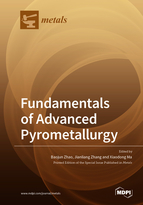Numerical Simulation and Application of Tundish Cover Argon Blowing for a Two-Strand Slab Continuous Casting Machine
Round 1
Reviewer 1 Report
Dear authors, here are a few suggestions for You to improve the quality of your manuscript:
41. SEN – abbreviation not described
37/43. – „as a kind of“ Definition – (used to say that your description of something is not exact) is not suitable for the scientific description of a subject
Fig. 4: axis Y – “faction” – probably “fraction”
Table 5. - the table extends beyond the page border
Conclusions (1) 307-311 / Abstract 20-26 – Similar text in both
Author Response
The point-by-point response to the reviewer's comments can be found in the attached file.
Author Response File: ![]() Author Response.pdf
Author Response.pdf
Reviewer 2 Report
- A brief summary (one short paragraph) outlining the aim of the paper, its main contributions and strengths:
The main aim of the paper under title Numerical Simulation and Application of Tundish Cover Argon Blowing for a Two-Strands Slab Continuous Casting Machine is the validation of efficiency of argon blowing to the tundish during the two stages. At first, the argon blowing to the tundish is realized during the preparations of tundish before casting to keep inert atmosphere inside of the tundish before filling of tundish by steel and therefore, to minimize the reoxidation of cast steel. In the second stage, the argon blowing in tundish is verified during the casting of steel. For verification of efficiency of argon blowing was used the numerical modelling and the plant experiment.
The theme is very useful especially from the steel cleanness which is important from all of view (quality, competitiveness, etc.). The Weakness of submitted manuscript is the not so clear description on numerical model setting and the own procedure of simulation.
- Specific comments
Chap. 2.1 Governing Equations and Boundary Condition:
You declare the using of the Species model and the Species transport equations in the case simulation of argon blowing….but this model is much more suitable for simulation of transient curve (e.g. simulation of transition zone or RTD curves). For modelling of argon blowing is much more appropriate the DPM model (Discrete Phase Model). Therefore, please, explain in the manuscript in the chap. 2.1 the reason of Species model application and the principle of using in your case = explain the simplification of simulation.
Chap. 2.2
From the description and also from the Fig.1 of study system/modelled geometry it is not fully clear the design of the tundish cover - how is the cover made? Refractory plate with holes? Where is the slag and which type? Please, specify more clearly, used appropriate construction draw with construction view. Also discuss the effect of argon blowing during casting stage when the surface of steel is covered by slag.
Line 140-149: Description of boundary conditions and Table 1:
a) It is not clear from the description how the boundary conditions are set - it would be useful to indicate the boundary conditions directly in the geometry diagram and to align the description of the settings with the data in the table (e.g. velocity inlet, outlets....the table shows the actual argon blowdown values in Nm3/h....Could you specify also the velocity on inlets = recalculation?
b) It would be good to much more clearly specify that simulation setup is only for modelling of argon blowing in empty parts of tundish, no interaction with slag or steel is consider. The whole numerical simulation process is not entirely clear.
c) How the transition curves were obtained? Where did you monitored the decreasing of “oxygen” in tundish (monitored area or points)? What was modelled - argon blowing or just the change in air concentration? Something like an RTD curve? Then it would be necessary to declare the calculation method correctly - first the flow calculation, then the RTD curves.
Fig.7/Fig.8/Fig.11: Wrong descript of axis X = there should be a Flow Rate of Argon. Please, check the units!
Thank you for improvement of your manuscript.
Reviewer
Author Response
The point-by-point response to the reviewer's comments can be found in the attached file.
Author Response File: ![]() Author Response.pdf
Author Response.pdf
Round 2
Reviewer 2 Report
Dear authors,
thank you for acceptation, explanation and correction of all suggestions.
Maybe, you can consider the publishing more information about the cover of the tundish in the same way as in coverletter.
But from my side, the manuscript is acceptable for publishing now.
Reviewer





